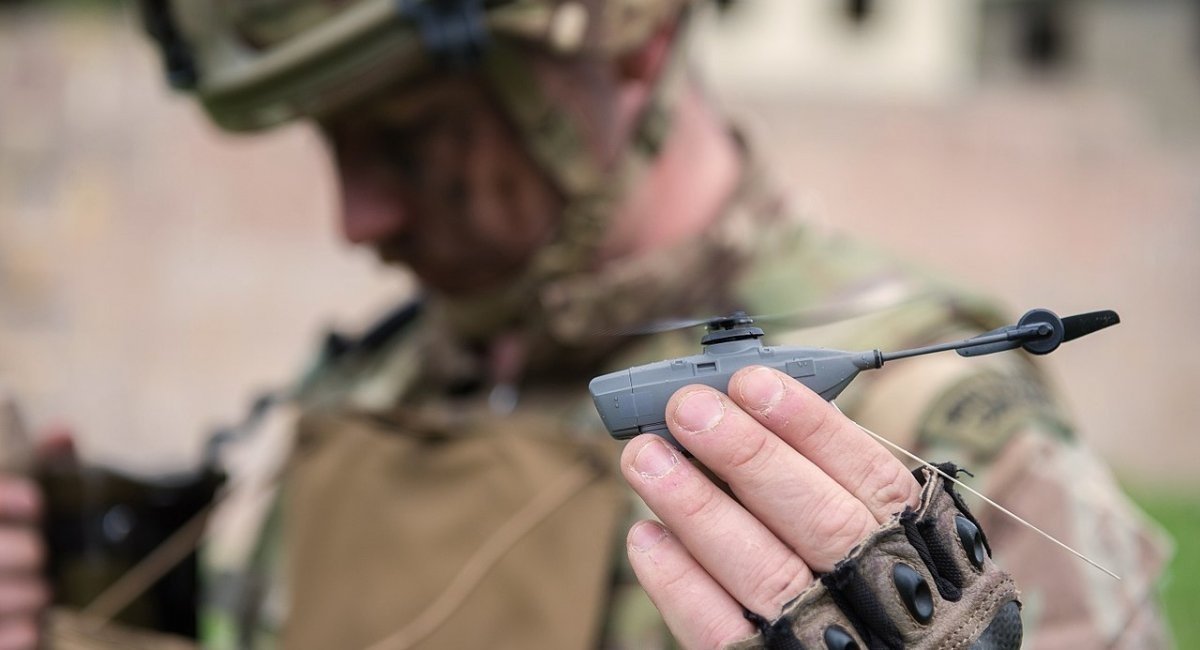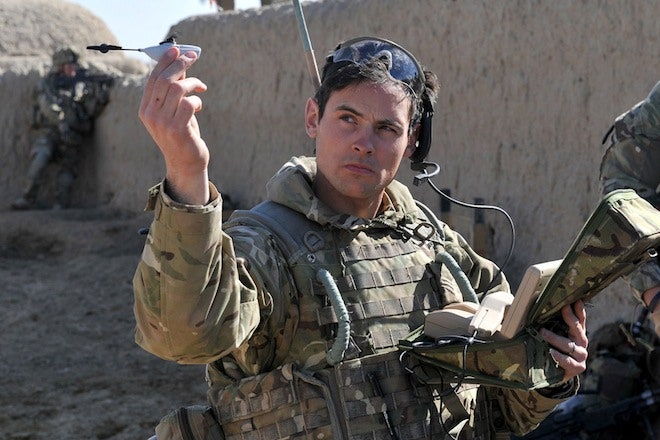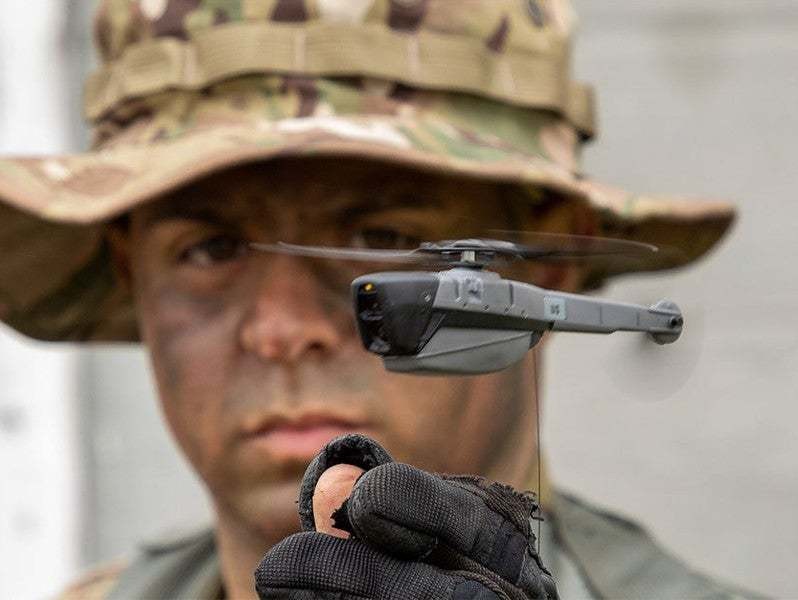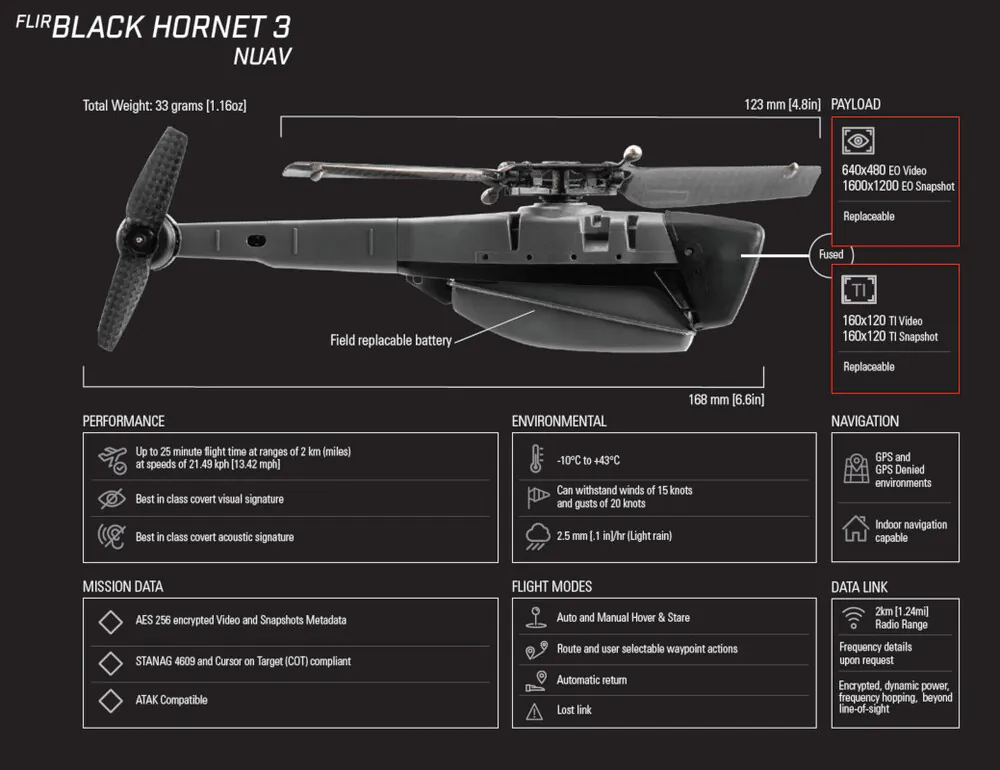The Black Hornet Nano is a military micro unmanned aerial vehicle (UAV) developed by Prox Dynamics AS of Norway, and in use by the armed forces of Norway, the United States, France, the United Kingdom, Germany, Ireland, Australia, the Netherlands, Poland, New Zealand, India, Turkey, South Africa and Algeria.

The drones measure around 16 × 2.5 cm (6 × 1 in) and provides troops on the ground with local situational awareness. They are small enough to fit in one hand and weigh 18 g (0.7 oz), with batteries.
The UAV is equipped with a camera, which gives the operator video and still images. They were developed as part of a £20 million contract for 160 units with Marlborough Communications Ltd.
An operator can be trained to operate the Black Hornet in 20 minutes. It has three cameras; one looking forward, one straight down, and one pointing down at 45 degrees. A Black Hornet package contains two helicopters and, since a 90% charge is reached in 20–25 minutes, the same as its hovering time, when one needs to be recharged the other is ready to fly.
The first thing worth paying attention is that the Black Hornet is not a replacement for drones such as the DJI Mavic or similar, but rather an addition that will be needed for a number of highly specialized tasks, namely premises reconnaissance.

Black Hornet Nano / Illustrative photo from open sources

Secondly, the drone is almost silent, during windy weather it was tested 10 meters from a group of soldiers and no one could hear it. Talking about visibility, the drone an be seen in the clear sky from a distance of 50 meters, while against the background of walls the enemy will be lucky to see it from 20 meters away.

This drone is quite convenient to transport and can be launched with one hand. The complex may include a drone with two daytime cameras or one thermal imager, as well as a tablet that transmits images from the camera and telemetry, as well as a charging station.
As for the picture from the camera, of course, it does not have any extraordinary quality, but it is enough to identify the enemy at a short distance.

Among the disadvantages is the cost of such a small “bird”: a set of two drones, a control point and a charging station costs 40 to 60 thousand dollars.
Source: en.defence-ua.com








